By Dan Weisz
During a recent two day period I was able to spend some time with some “H” birds and took some photos that I really like. I have shots of each bird both perched and in flight and hope you enjoy them. These birds were all seen in a mid-town Tucson neighborhood.
H is for Hawk: Cooper’s Hawks are a very common urban raptor in the Tucson Area. They are known for stalking birds at backyard feeders and they have adapted well to all that Tucson has to offer them. This Cooper’s Hawk was perched in the shade of a mesquite grove. Because of the heat, it kept its mouth open to help to dissipate heat (much like dogs do by panting). You can see the gray back, the very long striped tail, and the red eye of this adult Cooper’s Hawk.
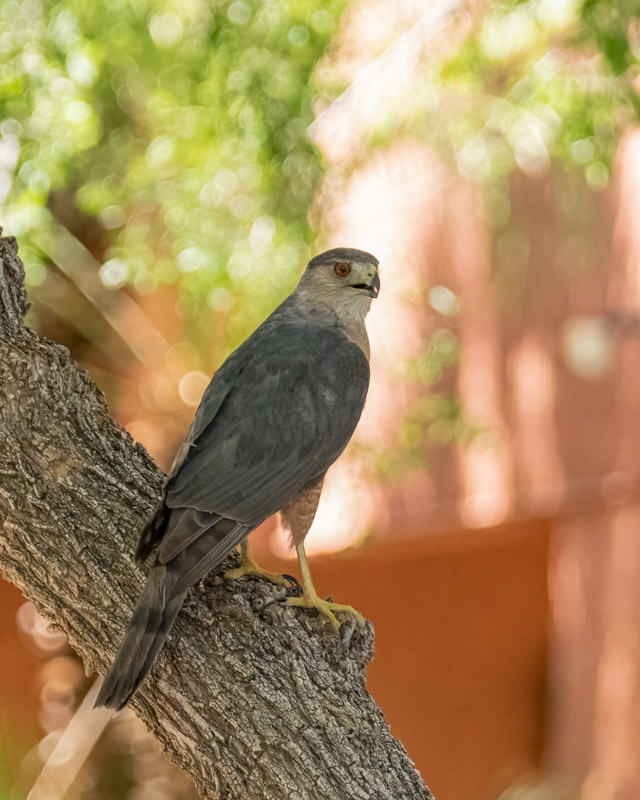
As I walked down the path, the Cooper’s Hawk flew to a tree a little bit ahead of me. In this shot, you can see the orange barred belly that is typical of adult Cooper’s Hawks. Those long toes and talons come in handy for grabbing birds and other prey.
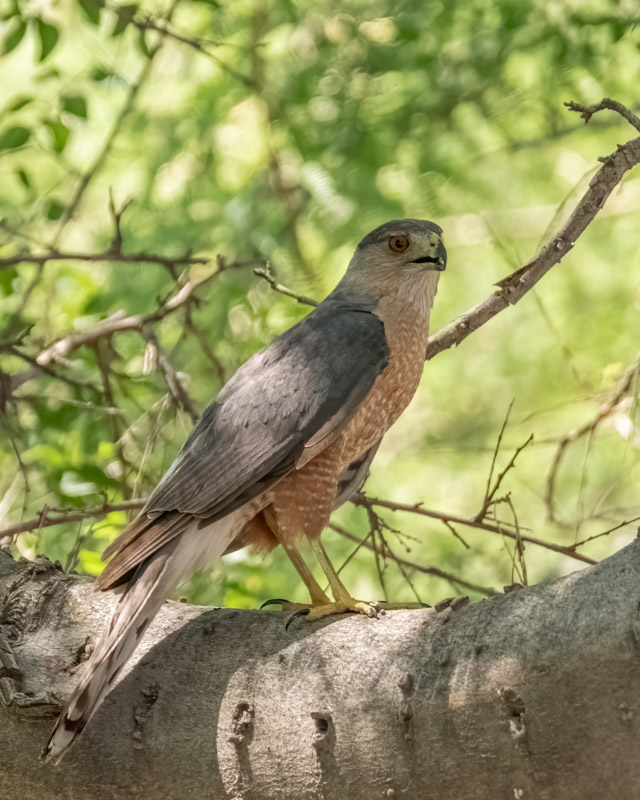
And then the Cooper’s took off flying past homes and then turned back towards the area I had just left.
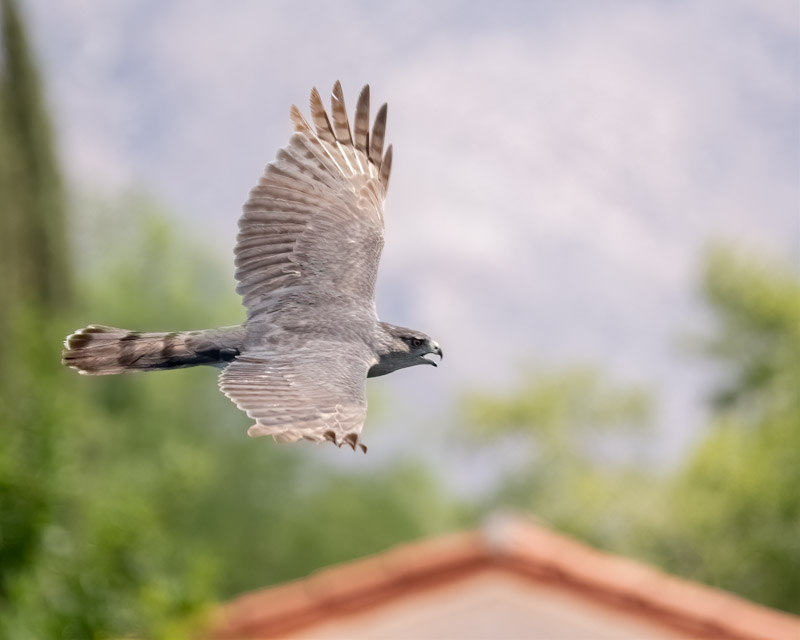
Cooper’s Hawks are accipiters. That group of raptors are known for their short, broad wings and their long tails, adapted for fast flight in wooded country. The short broad wings offer bursts of speed and the long tail provides maneuverability in crowded forests, acting like a rudder in flight.
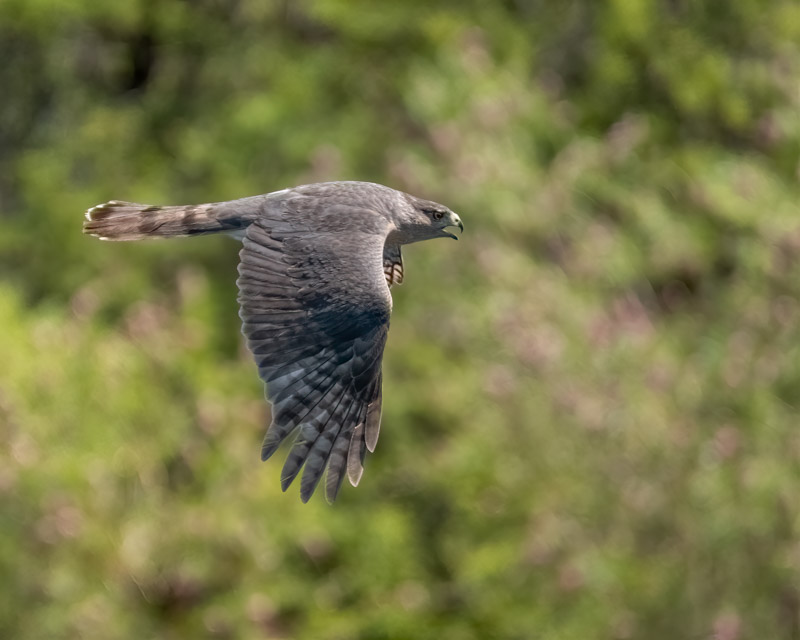
When it landed across the way on a “perfect perch”, it showed the underside of its tail. What a good-looking bird!
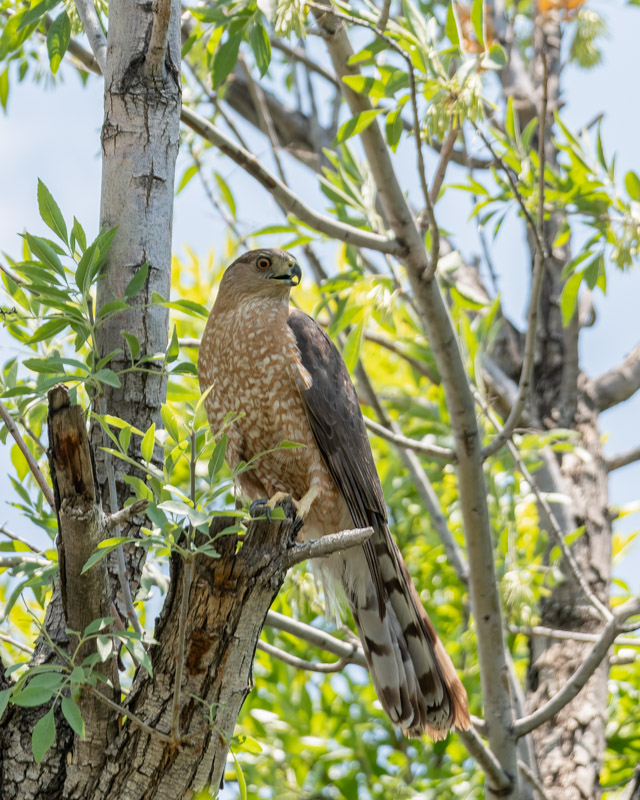
H is for Hummingbird: There were hummingbirds around the many flowers and water features in the neighborhood. In one spot, I was able to watch as several Anna’s Hummingbird flew through the same area often harassing the others. There were some popular perch spots like the one below. This bird is a female. Although she is in the shade, you can see the dark spots on her chin and in sunlight, those might flash red. The Anna’s also has a light line above her eye.
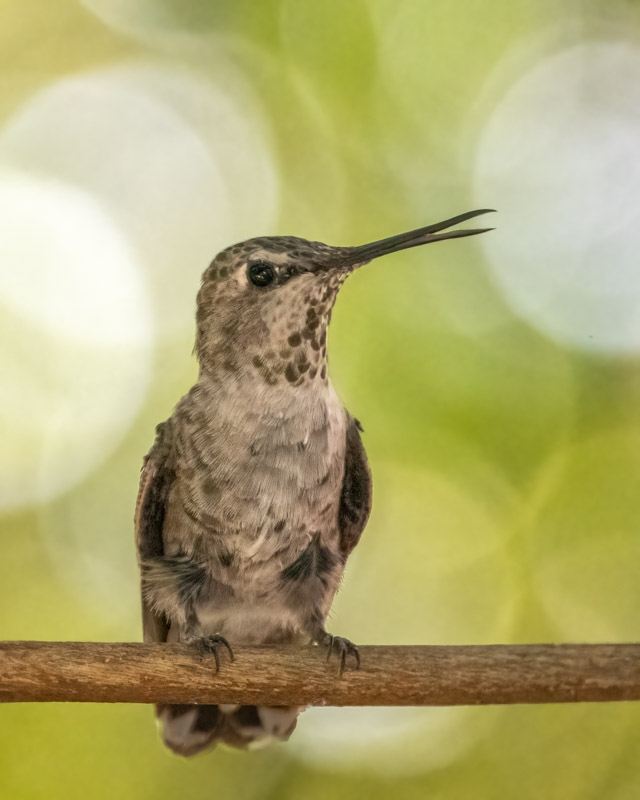
Many of the hummingbirds were coming to a fountain in one yard. Everyone is feeling the extreme heat in Tucson these days and the hummingbirds were coming in for quick drinks and/or a quick splash. Here, the hummingbird is hovering right above the fountain and the brick wall behind her offers a colorful contrast. You can also see that it has molted one feather on each wing- the fifth primary. Birds will molt their feathers annually, allowing new feathers to grow in to replace the old ones. This process usually occurs after breeding season. You can see how worn her tail feathers are now as well. It’s kind of cute to see how she’s holding her feet in this shot!
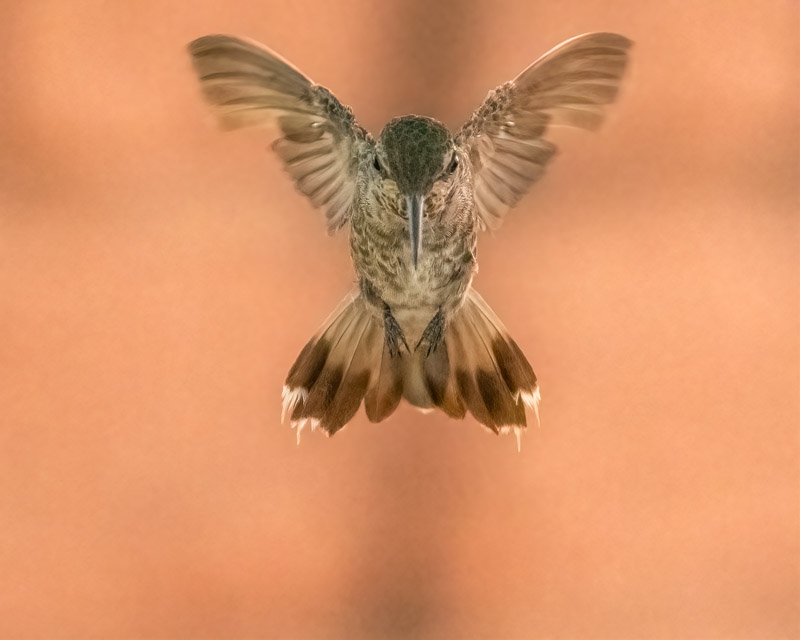
And the next shot shows the process of her wing beat. She was ready to begin her descent towards the bubbling water.
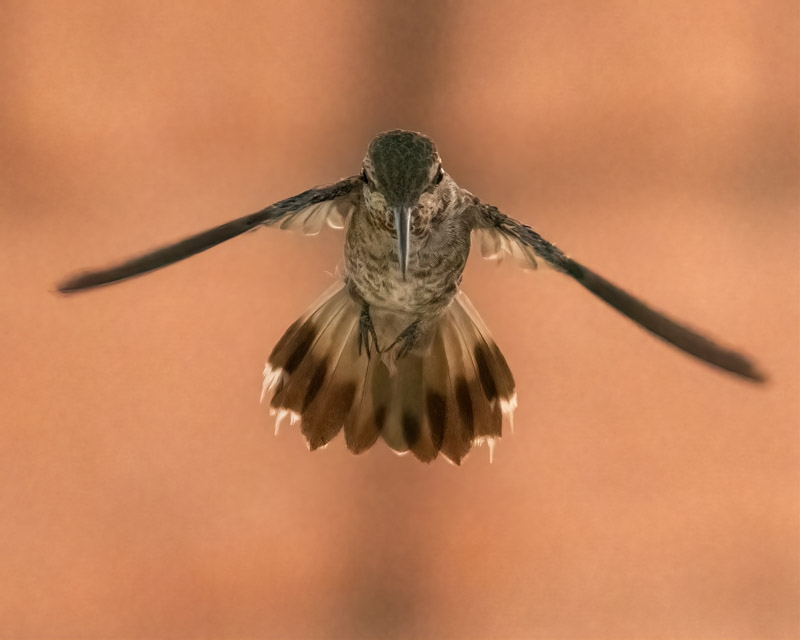
H is for Heron: I was surprised to see a Great Blue Heron because they are not here in great numbers and they do wander from spot to spot. However, Great Blue Herons are year-round residents of the Tucson Valley. While they are shorebirds who are most often found in shallow water, they can also be seen in farmlands in Pima County working flooded fields for prey. Great Blue Herons stand four feet tall. It’s hard to miss them.
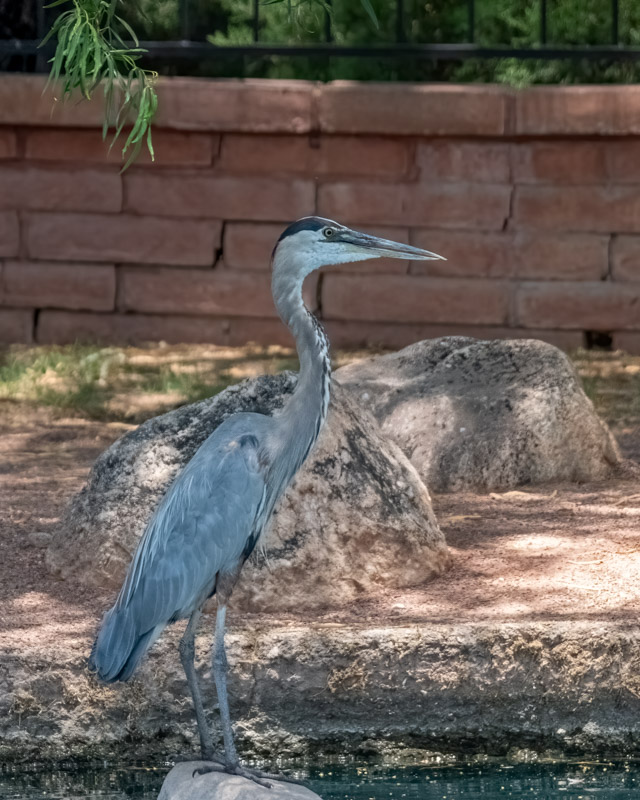
Great Blue Herons are the largest herons in North America and when they fly, their six feet wingspan is startling. They are graceful flyers with their long neck curled into an “S” shape and their legs trailing behind them. The Heron flew close to the ground heading towards another perch spot on the other side of the lake.
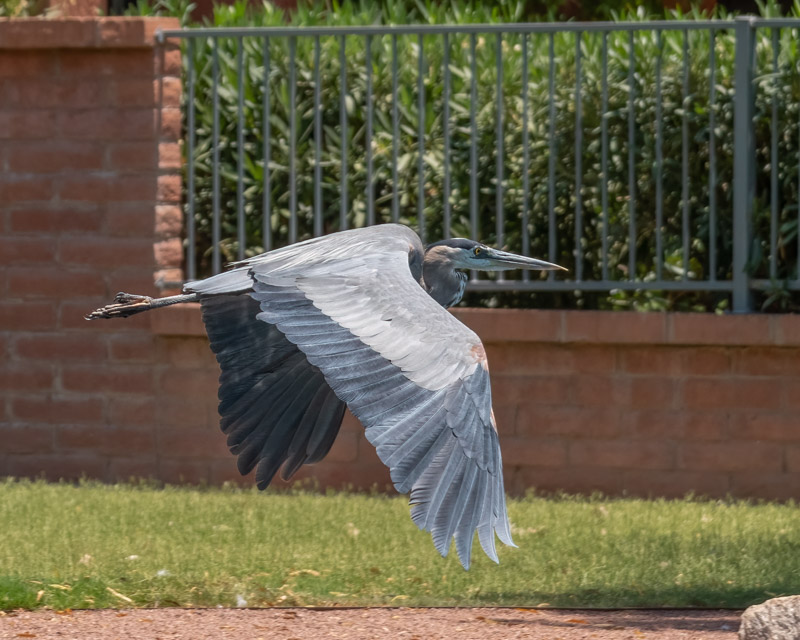
The Great Blue’s short tail is noticeable here. With the bird turning, we get a great look at its back as it glides across the water.
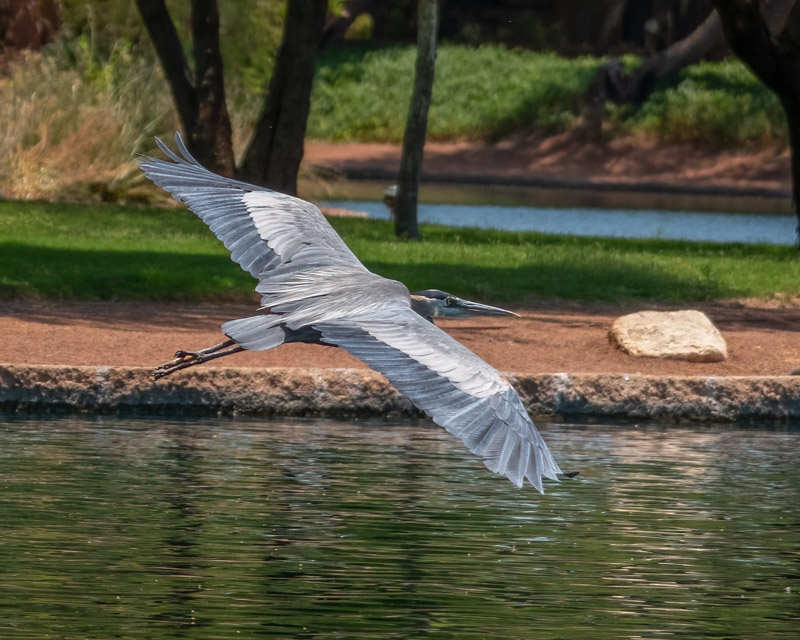
Turns out, H is for Heckuva nice time!!
